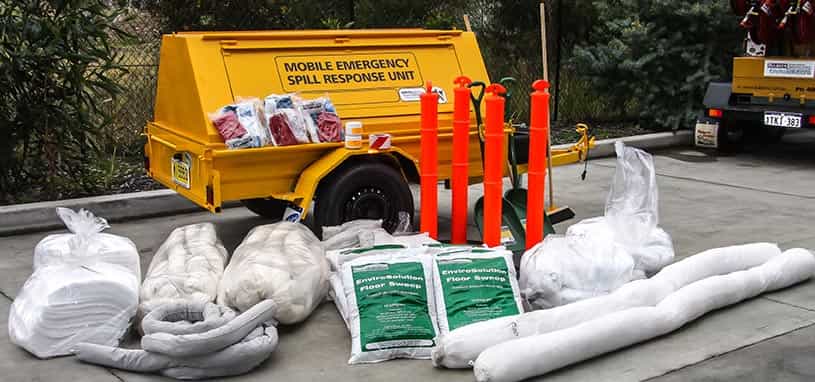Stay spill-compliant with SpillPro’s spill barrier bund
Having an oil or chemical spill in the workplace that migrates into a stormwater or wastewater sewer is a serious offence. The EPA is the body responsible for enforcing Australian legislation for protecting the environment. They have the power to impose fines and penalties for violations. In severe cases, they may even shutdown a plant or facility until their compliance can be demonstrated.
There are a number of regulations that apply to bunding and spill management. Australian Standard AS 1940B1993 covers the storage and handling of flammable and combustible liquids, while AS 4452B1997 covers storage and handling of toxic substances in terms of the Dangerous Goods Act.
A popular protection method companies use to contain liquids is drive over bunding. Often seen in workshops, warehouses, in loading and unloading areas - its ability to withstand loads of up to one tonne without distortion makes it highly versatile and effective.
Where to place drive over bunding
The key to controlling spills in the workplace is preparation. Once a liquid is already flowing into a drain, it's too late to take corrective action. Performing a risk assessment of your site is a great first step towards preparing for spills. Further steps might include:
- Identifying the areas where liquid products are stored, handled, and moved
- Locating the closest drain to the area, noting the slope of land
- Rearranging the site workflow to minimise the risk if necessary (e.g. moving the storage area to the low point)
- Calculating an area to protect with drive over bunding. The area should be large enough to contain any spill that could happen there.
- Demarcating and laying the drive over bunding
What other spill products do you need with drive over bunding?
Drive over bunding is designed to contain a spill in a specific area. Once a spill has occurred, it is important to clean it up as soon as possible. Chemical spills are often fire hazards, and a single source of ignition can turn a spill into a blazing threat. Other chemicals are toxic to workers. Any delay in clean-up could have long-term health impacts, so it important to attend to spills quickly to protect workers from harm.
Spill kits can be used with your drive over bunds in preparation for any incident. Spill kits contain floor sweeps, absorbent pads and waste containment bags for easy disposal.
Different types of absorbent materials are used for different chemical spills. Some are made for hydrocarbons, while others are more suitable for chemicals. So, it's important to choose the appropriate spill kit absorbents for your particular needs. Spill kits also contain PPE and disposal bags for the collected waste.

How do you install drive over bunding?
Drive over bunding comes pre-glued. Simply peel back the tape and lay it on the floor. Segments interlock with one another to make the connections strong and completely sealed. The glue holds the segments together and binds them to the floor.
What happens when you drive over the bunding?
The main advantage of drive over bunding is its ability to withstand heavy loads. Vehicles weighing up to one tonne can ride over the bunding without distorting it. This is especially useful for forklift environments where these vehicles enter and exit loading areas continuously to add and remove products. Drive over bunding has bevelled edges to make it easier for forklift tyres to pass over the barrier.
Can I customise my drive over bunding?
SpillPro supplies drive over bunding in 90-centimetre lengths. Numerous lengths can be laid one after the other to make the bunded area as large as needed. Our drive over bunding can also be cut to a custom length and joined at angles to make any shape.
Contact SpillPro for more information about drive over bunding
SpillPro supplies drive over bunding for diverse applications and environments, such as workshops and warehouses. Our experts can help you perform a risk assessment on your site to identify the best area for drive over bunding.
We work with you to protect your facility from toxic spills. Helping you remain compliant with EPA standards and reduce the risk of costly fines.
Our SpillPro specialists will answer all your maintenance questions. Call 1800 368 450 today.
Must Read
SpillPro on 24 February 2025
Why Spill Readiness Matters
A spill isn't just an inconvenience. If not handled properly, it can lead to safety hazards, environmental damage, and compliance issues. By equipping your site with the right spill response solutions ...
Read moreSpillPro on 30 October 2024
Choosing the Right Containment Boom
Containment booms are the first line of defence in any spill response plan. When a spill occurs, swift and effective containment is crucial to minimise environmental impact and financial loss. Selecti ...
Read more